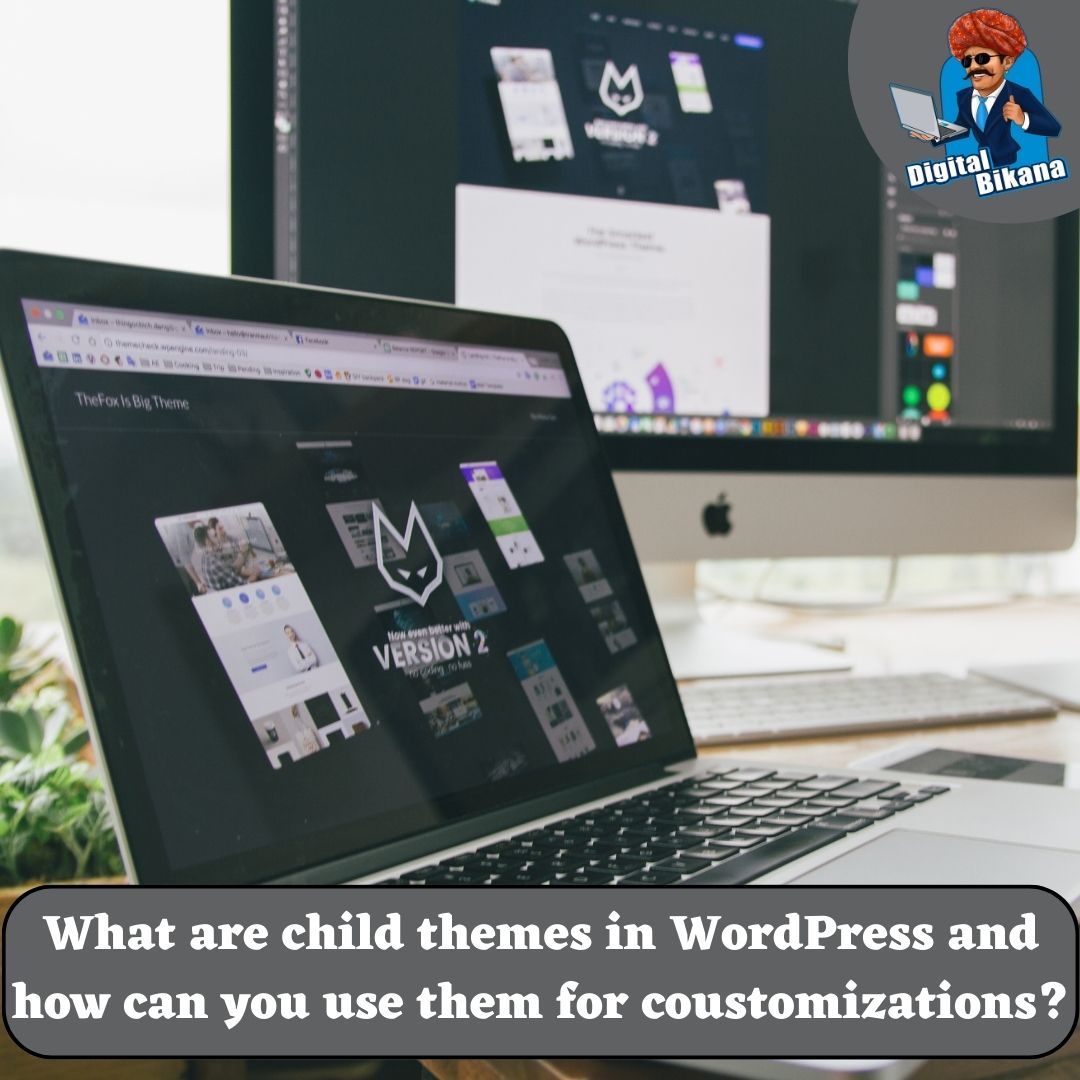What are child themes in WordPress and how can you use them for customizations?
In this article we are going to talk about What are child themes in WordPress and how can you use them for customizations? WordPress is an incredibly powerful and flexible platform that enables users to create and manage websites with ease. One of its key features is the ability to create child themes, which allow you to customize and modify the appearance and functionality of your website without altering the original parent theme.
What are child themes in WordPress and how can you use them for customizations?
In this article, we will delve into the concept of child themes in WordPress, their importance, and how you can effectively use them to make customizations to your website.
1. Understanding Child Themes
In WordPress, a child theme is a separate theme that inherits all the features and functionality of its parent theme while allowing you to make customizations without modifying the parent theme’s core files. The parent theme serves as the foundation, providing the overall structure, styles, and functionality for your website.
A child theme is like a layer that sits on top of the parent theme, allowing you to change how it looks and works by replacing or adding new files. It essentially allows you to create a personalized version of the parent theme while still receiving updates and maintaining the flexibility to switch themes without losing your customizations.
Read Also: How can you optimize the typography and font choices in a WordPress website?
2. Why Use Child Themes
Child themes offer several benefits and are considered best practice when customizing a WordPress website. Here are a few reasons why you should consider using child themes:
a) Preserving Parent Theme Updates
When you modify the core files of a parent theme directly, any updates to the theme will overwrite your changes. With a child theme, you can update the main theme without losing your custom changes.
b) Easy Maintenance and Updates
Child themes simplify maintenance by separating your customizations from the parent theme. You can update the parent theme without affecting the design or functionality of your website.
c) Code Modularity and Organization
Child themes promote cleaner code structure by isolating your customizations in separate files. This makes it easier to manage and understand your custom code, improving overall development efficiency.
3. Creating a Child Theme
Creating a child theme in WordPress is a straightforward process. Here’s a step-by-step guide:
a) Create a New Directory
Start by creating a new directory for your child theme in the “wp-content/themes/” folder of your WordPress installation. Give the directory a unique name, preferably related to your website or project.
b) Create a Stylesheet File
Inside the child theme directory, create a new file named “style.css”.This file holds the customized styles for your child theme. Begin the file with a comment block that includes the required information, such as the theme name, template, and other optional details.
Read Also: What is WordPress and why is it popular for website designing?
c) Enqueue Stylesheet
In the “functions.php” file of your child theme, enqueue the stylesheet to ensure it loads with the child theme. Use the “wp_enqueue_style()” function to add the child theme’s stylesheet.
d) Activate the Child Theme
Log in to your WordPress admin panel, navigate to “Appearance” > “Themes”, and you should see your child theme listed. Activate the child theme to start using it on your website.

4. Customizing a Child Theme
Once your child theme is activated, you can begin customizing it to fit your needs. Here are a few ways to make customizations:
a) Modify Styles
Open the “style.css” file of your child theme and add your custom CSS code. You can override specific styles from the parent theme or introduce new styles to change the appearance of elements on your website.
b) Template Files
If you need to modify specific templates or page layouts, create a file with the same name and directory structure as the corresponding file in the parent theme. WordPress will prioritize the file in the child theme, allowing you to customize it as desired.
Read Also: What are some best practices for website security in WordPress?
c) Functions and Hooks
Use the “functions.php” file of your child theme to add custom functions or modify existing ones using hooks and filters. This allows you to extend or override functionality from the parent theme.
5. Best Practices and Tips
To ensure a smooth experience with child themes, consider the following best practices:
a) Keep your child theme lightweight and focused on customizations. Avoid duplicating unnecessary files from the parent theme.
b) Regularly update your child theme along with the parent theme to ensure compatibility and security.
c) Document your customizations by adding comments to your code. This will help you understand and maintain your customizations in the future.
d) Use version control, such as Git, to track changes in your child theme and easily roll back modifications if needed.

Conclusion:
Child themes provide a powerful way to customize and personalize your WordPress website while maintaining the flexibility to update and switch themes. By understanding the concept of child themes, their benefits, and following the proper steps to create and customize them, you can unleash the full potential of WordPress customization. Embrace child themes to create a unique and tailored website that aligns with your specific requirements and design preferences.
You can also checkout this website designing institute to learn digital marketing course by enrolling in our course Or Contact Digital Bikana on +91-8949483728

